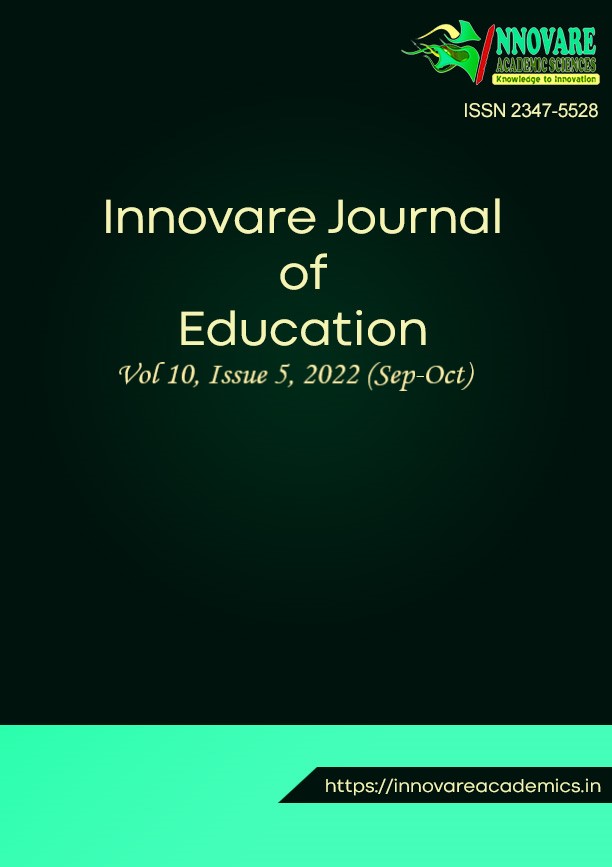Unintended Consequences of Coronavirus on Education Participation in Budalangi Sub-County of Busia, Kenya
DOI:
https://doi.org/10.22159/ijoe.2022v10i5.46062Keywords:
COVID-19, disaster, e-learning, floods, participationAbstract
This study looked at the unintended effects of coronavirus infections on students’ engagement in school in the Kenyan region of Budalangi. Floods frequently occur in the Budalangi region. The impact of child labor on student engagement was examined in this study. Due to the financial crisis and the terrible circumstances they experienced while living at the camps, the majority of students were unable to access learning materials online since their parents could not afford to support their children’s education. Notably, the majority of the pupils residing in the camps helped their parents with manual labor to make a living, including gathering sand, laboring in rice fields, and fishing along the shores of the River Nzoia and Lake Victoria. The studies also determined how teen pregnancies and young marriages affect student participation. These activities made it difficult for them to study. Poor return rates and low engagement rates in education are hence symptoms of the issue. This is a result of the community setup’s poor social and economic ties. This is consistent with what the UNICEF Executive Director said about how COVID-19 has affected students’ participation in school. He emphasized that COVID-19 had a detrimental effect on students’ attendance.
Downloads
References
Given, L. M. (2008). The SAGE encyclopedia of qualitative research methods. SAGE Publications. https://doi.org/10.4135/9781412963909
Imbovah, M. A., Mackatiani, C. I., Getange, K. N., & Bogonko, S. (2018). Students’ completion rates: Implications for Teaching and Learning Resources in Secondary schools in Kenya. Journal of Education and Practice, 9(24), 38-43.
KNBS (2014). Kenya demographic and health survey 2014. Government Printer. https://dhsprogram.com/pubs/pdf/fr308/fr308.pdf
Mackatiani, C. I. (2017). Influence of physical facilities on quality primary education in Kenya in post UPE and EFA era. European Journal of Educational Studies, 3(5), 822-840. http://dx.doi.org/10.46827/ejes.v0i0.743
Mackatiani, C. I., & Likoko, S. N. (2022). Coronavirus Era: Implications for massive open online courses in basic education institutions in Kenya. London Journal of Research in Humanities and Social Sciences, 22(2), pp. 1-18.
Mackatiani, C. I., Ariemba, A. N., & Ngware, J. W. (2020). African response to quality education: Comparative perspectives on quality primary education in Kenya. European Journal of educational studies, 6(11), 313-323. http://dx.doi.org/10.46827/ejes.v0i0.2846
Mackatiani, C. I., Joseph, M. N., & Komo, G. D. (2017). Quality primary education in Kenya: Implications of teachers’ characteristics. European Journal of Education Studies, 3(8), 635-650. http://dx.doi.org/10.46827/ejes.v0i0.967
Mackatiani, C. I., Joseph, M. N., & Komo, G. D. (2018). Learning achievement: Illusions of teacher-centered approaches in primary schools in Kenya. Journal of Education and Practice, 9(18), 46-55.
Mackatiani, C. I., Navin, I. M., & Owino, M. A. (2022). Transition in education: Perspectives on girls’ drop-out rates in secondary schools in Kenya. London Journal of Research in Humanities and Social Sciences, 22(1), 41-51.
Ministry of Health. (MoH) (2020). Interim guidelines on the management of COVID-19 in Kenya. Government Printer. https://www.health.go.ke/wp-content/uploads/2020/06/Updated-Case-Management-Guidelines-26_03_20-1.pdf
UNICEF. (2021). Effectiveness of digital learning solutions to improve educational outcomes: A review of the evidence. https://www.unicef.org/documents/effectiveness-digital-learning solutions-improve educational-outcomes
World Bank Group. (2020). Kenya Economic Update, November 2020: Navigating the Pandemic. World Bank. https://openknowledge.worldbank.org/handle/10986/34819
Published
How to Cite
Issue
Section

This work is licensed under a Creative Commons Attribution 4.0 International License.





